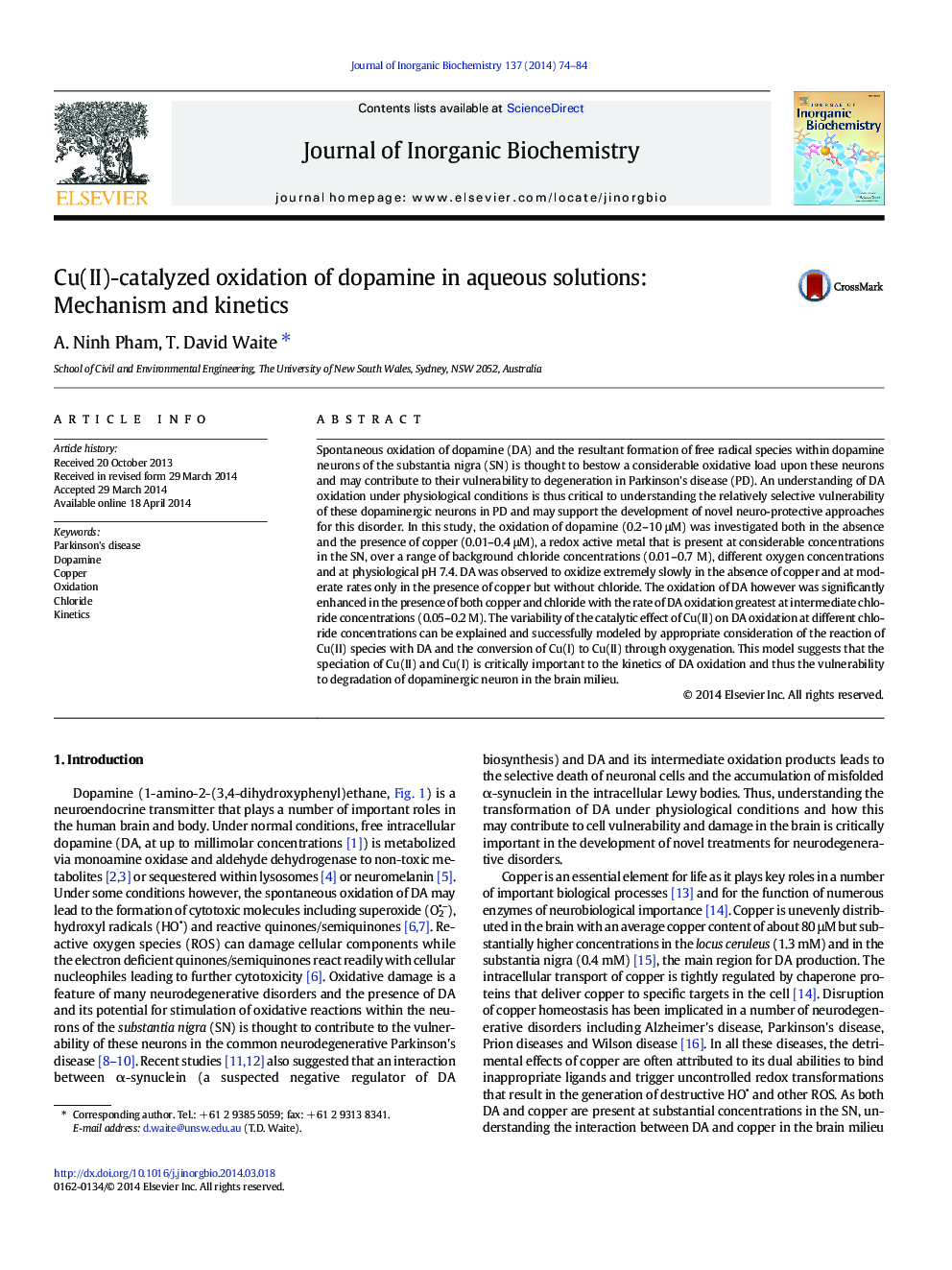| Article ID | Journal | Published Year | Pages | File Type |
|---|---|---|---|---|
| 1316712 | Journal of Inorganic Biochemistry | 2014 | 11 Pages |
Spontaneous oxidation of dopamine (DA) and the resultant formation of free radical species within dopamine neurons of the substantia nigra (SN) is thought to bestow a considerable oxidative load upon these neurons and may contribute to their vulnerability to degeneration in Parkinson's disease (PD). An understanding of DA oxidation under physiological conditions is thus critical to understanding the relatively selective vulnerability of these dopaminergic neurons in PD and may support the development of novel neuro-protective approaches for this disorder. In this study, the oxidation of dopamine (0.2–10 μM) was investigated both in the absence and the presence of copper (0.01–0.4 μM), a redox active metal that is present at considerable concentrations in the SN, over a range of background chloride concentrations (0.01–0.7 M), different oxygen concentrations and at physiological pH 7.4. DA was observed to oxidize extremely slowly in the absence of copper and at moderate rates only in the presence of copper but without chloride. The oxidation of DA however was significantly enhanced in the presence of both copper and chloride with the rate of DA oxidation greatest at intermediate chloride concentrations (0.05–0.2 M). The variability of the catalytic effect of Cu(II) on DA oxidation at different chloride concentrations can be explained and successfully modeled by appropriate consideration of the reaction of Cu(II) species with DA and the conversion of Cu(I) to Cu(II) through oxygenation. This model suggests that the speciation of Cu(II) and Cu(I) is critically important to the kinetics of DA oxidation and thus the vulnerability to degradation of dopaminergic neuron in the brain milieu.
Graphical abstractCopper catalytically mediates the oxidation of dopamine to melanin with the rate of oxidation strongly dependent on chloride concentration. Kinetic modeling of this process reveals copper turnover frequencies as high as 90 h− 1 in the initial stages of the dopamine oxidation process.Figure optionsDownload full-size imageDownload as PowerPoint slide
